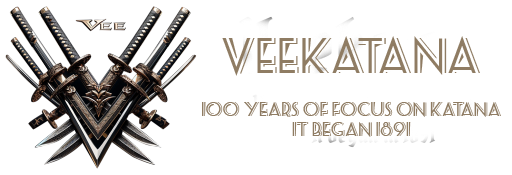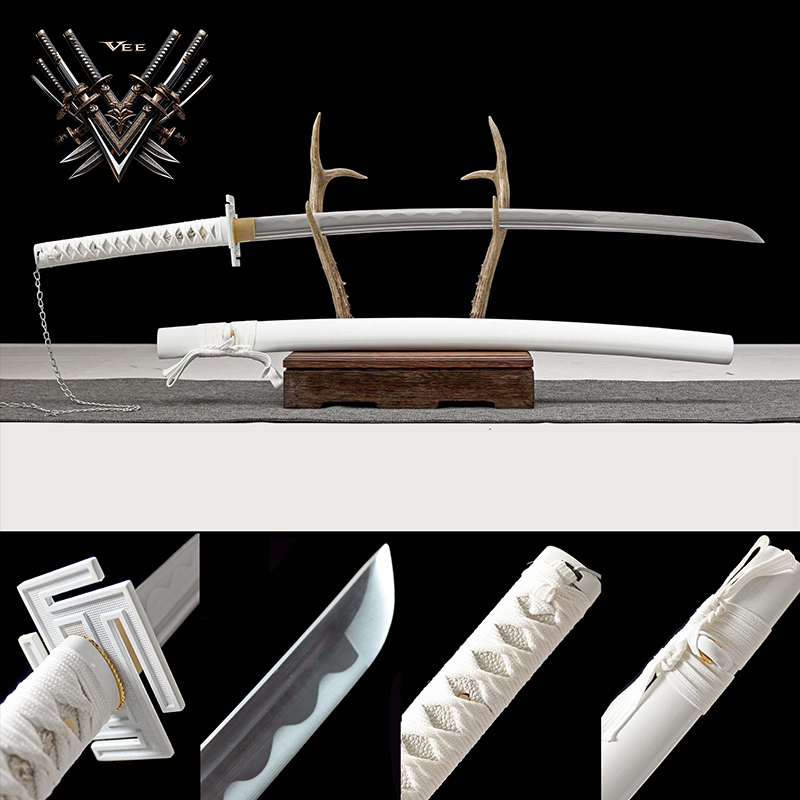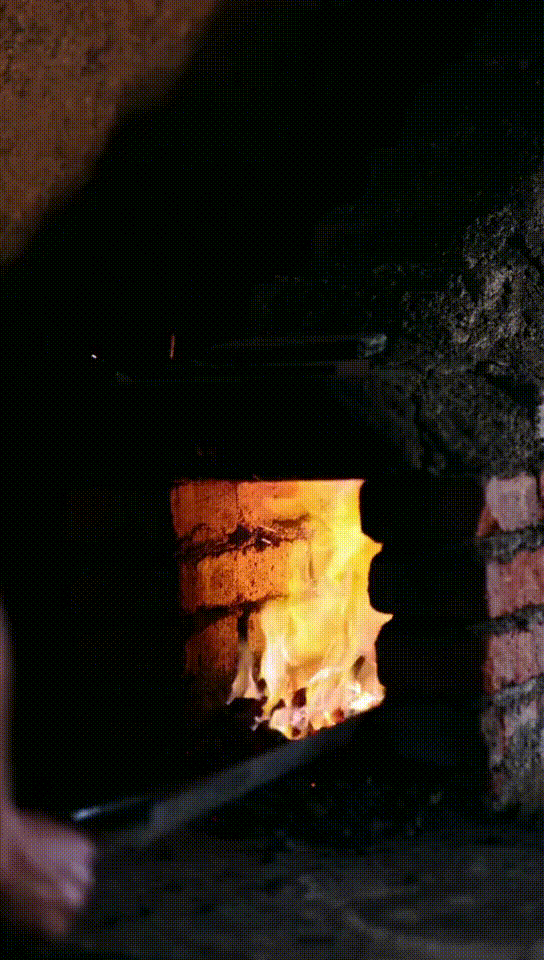Japanese Katana swords
Looking for high-performance samurai swords? TrueKatana specializes in handmade authentic Japanese samurai swords, Katana, Wakizashi, Tanto, Ninja swords, and Anime replica swords for collectors, martial artists, and bushido culture enthusiasts.
-
$ 380.00Save $ 182.00$ 770.00Save $ 581.00(5.0)$ 770.00Save $ 581.00(5.0)$ 770.00Save $ 572.00(5.0)$ 770.00Save $ 572.00(5.0)$ 770.00Save $ 572.00(5.0)$ 770.00Save $ 572.00(5.0)$ 770.00Save $ 572.00(5.0)
Precautions after receiving the katana!!!
Please follow our how-to video to protect your katana

QUALITY
Our vast selection of steel grades allows us to provide an assortment of the finest knives and swords
CRAFTSMANSHIP
Excellent craftsmanship of each handmade sword using Traditional methods make it a piece of art.
GUARANTEE
Vee guarantee high quality swords according to specifications & ensures top notch customer service and fast shipping.
We will ensure that all our katanas are handmade!
Vee is committed to melting our knowledge of the world, our knowledge of values and what we have learned throughout our lives into cold weapons without conventional, uncompromising, and putting aside all concerns and constraints to do the best we can. This is what we want to show the world needs our world needs these contents! Knife friends, cold weapons manufacturers, work together, let cold weapons let cold weapons art, shine, bright!PurchaseThey talk about us.
-
A katana that is both decorative and practicalWelcome to Veekatana, an online store that specializes in selling Japanese samurai swords. Our goal is to provide our customers with gorgeous samurai swords with more or less exotic designs at affordable prices. In our catalog you can find all types of blades, materials, colors and finish levels. Although katanas are often considered purely decorative, they are also very practical. Katanas are traditionally made of a high-carbon steel, making them very durable. In fact, Japanese knives were valued for their strength and durability, so much so that they were often used in feudal Japan. Today, katanas are still made using the same methods and materials as they were centuries ago. As a result, they create beautiful pieces for collectors and those who appreciate high quality craftsmanship. Vee specializes in selling real samurai swords that can be both decorative and practical!
-
How much does a samurai sword cost?The price of a katana depends on many factors, including the quality and wear of the steel. But overall, the katana is not a cheap weapon, and its price is comparable to high-end guns. Therefore, it is not recommended for first-time buyers or those on a limited budget to buy a katana. Interested people should thoroughly research Japanese knives before buying to ensure they are getting a quality product.
-
Where can I find a good katana?Veekatana is the reference store for buying samurai swords in the United States. We offer samurai swords for every budget in our catalog and are known for handmade Japanese swords made from noble materials.
-
Characteristics of the katanaTraditional Japanese samurai swords are characterized by their distinctive appearance and they are made up of several parts:BladeThe blade is the heart of the katana, and there are two types of keel (nakago) : full keel and partial keel. In order for a katana to be strong, its shank must pass completely through the handle in length and width. Then there's the BO-HI (furrow), which makes the blade lighter and brings the center of gravity closer to the Tsuka, making it easier to handle. On higher end blades, we see imperfect wavy patterns: This is Harmon! It is caused by the clay selective hardening process, which allows you to have a harder Ha (sharp edge) while maintaining a softer Mune (knife back). Finally, the tip of the katana is called Kissaki, which is defined by a line called yokote.Mound (handle)The tsuka is where the sword comes into contact with its user. The Kashira is the round part at the end of the tsuka. The base of the tsuka is generally made of solid wood and wrapped in shark skin to give it a good grip and won't slip. A strip of cotton or silk called tsuka-ito is woven into this shark-leather to enhance the appearance while enhancing the Tsuka. Beneath the ITO are a bamboo Mekugi or two, which fasten the blade's handle foot to the tsuka, and a decorative piece called a Menuuki.锷(defender)The E represents the gauntlet of the katana, which separates the E from the blade and adds an extra beauty to the sword. Fuchi is a decorative ring that defines the top of tsuka, matching Kashira. The Habaki is a copper part that stabilizes the blade and buffers the shock transmitted to the handle during cutting, and the final Seppa is 2 pieces that allow the tsuba to be adjusted on the blade.SheathThe sheath is an important part of the katana, it can hide the blade so that it can be carried without injury, and prevent the blade from wearing out and rusting. At the end of the sheath, we find the Kojiri, a circular piece that represents the end and prevents the tip of the blade from going through the sheath. The Kurigata is a ring from which SAGEO can be hung, which is a decorative or fixed rope made of cotton or silk. To consolidate the chestnut shape, its interior is covered with a protective chamber: the Shitodome. The opening of the sheath is called the "carp mouth", referring to the carp's mouth.
-
Is it legal to own a samurai sword?The legality of owning a katana depends on your country or state and the specific circumstances of owning a katana. In some places, it is legal to own a katana, while in others, it may be restricted or prohibited. For example, in the United States, people over the age of 18 can buy a samurai sword because it is considered a Category D over-the-counter weapon. It is important to research the laws in your area to determine the legality of owning a katana and to ensure that you comply with any relevant regulations. Also, even if owning a katana is legal in your area, it is important to use it safely and responsibly, as it can be a dangerous weapon if not used properly.
-
The origin of the katanaThe katana (Hiragana かたな) is a Japanese sword with a curved blade, traditionally worn by samurai. The origin of the katana can be traced back to centuries of Japanese history.1.Ancient and Chinese influences: Early Japanese swords were influenced by Chinese technology and design, especially during the Yayoi period (300 BC-AD 300). These swords are usually short and double-edged.2.Yamato Period (300-710 AD) : During this period, Japan made advances in iron metallurgy, allowing for the development of more complex swords. However, these swords were not samurai swords in the modern sense.3.Heian Period (794-1185) : It was during this period that the modern katana began to appear. Forging techniques continued to improve, and the first characteristic elements of the katana, such as its curved shape and unique blade, began to appear. The craftsmen also perfected the differential quenching process, which involves cooling the blade quickly while allowing the spine to cool more slowly, giving the katana its famous strength and sharpness.4.Kamakura Period (1185-1333) : It was during this period that the term "katana" became commonly used to describe this particular type of sword. Forging and quenching techniques were further improved, and the katana became the weapon of choice for the samurai.5.Muromachi Period (1336-1573) : During this period, the art of katana making reached its peak. Japan has seen the emergence of many famous blacksmiths, who have made samurai swords known for their beauty, functionality, and combat effectiveness.6.Edo Period (1603-1868) : Although katanas continued to be used during this period, battles were less frequent, leading to a greater appreciation of katanas as objects of art and culture. Many katanas from this era have become national treasures and are highly valued for their quality and historical value.As a result, the katana evolved over the centuries to become one of the most iconic and revered weapons in Japanese history, representing both the samurai craft tradition and the Bushido philosophy.
Blog posts
-
The Ultimate Guide to Japan’s Legendary Katana Sword History
The katana means more than a simple sword; it represents Japan's deep-rooted culture, craftsmanship, and the unyielding Samurai spirit. This guide will take you on a trip to explore the captivating story of this legendary blade revealing2024-11-19 OviRead More > -
An Inside Look at Great Veekatana Sword Shop’s Famous Blades and Their Stories
When purchasing from Veekatana, collectors can be assured of authenticity. Learning how to tell if a samurai sword is real often involves checking for quality materials like T10 steel and examining katana measurements for accuracy. Veekatana takes2024-11-14 OviRead More > -
Why Great Veekatana Swords Are Ideal Gifts for Cultural Enthusiasts
Receiving a Veekatana sword is like owning a piece of ancient tradition, similar to Japan’s famed samurai katana and wakizashi pair. These swords embody the honor and values of warriors, making them an ideal gift for anyone interested in cultural his2024-11-12 OviRead More >

 USD
USD
































